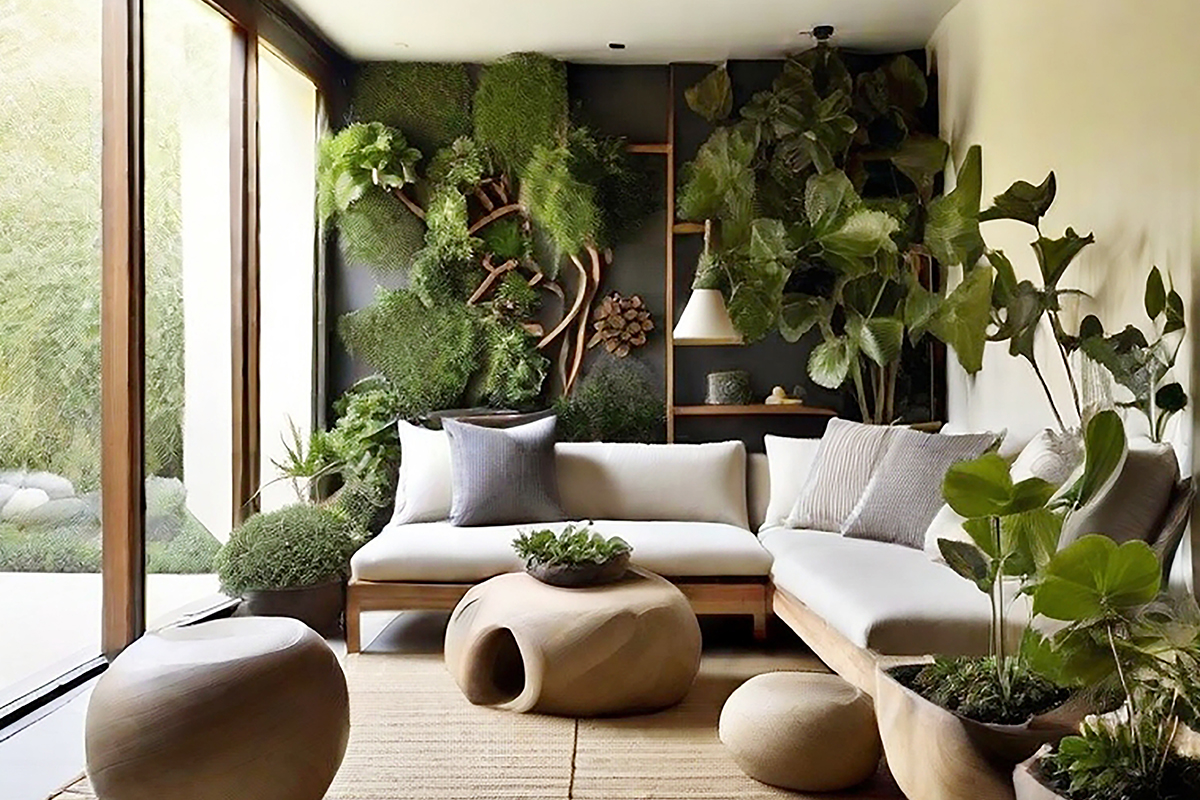In recent years, eco-interior design has become one of the most popular trends in decor. The growing interest in eco-friendly and sustainable solutions stems from people’s desire to care for nature, their health, and the future of the planet. This article will discuss how to make your home more eco-friendly, explore ideas for different rooms, and provide examples of solutions for creating a sustainable interior.
Natural and Recycled Materials in Interior Design
Choosing materials is essential in creating an eco-interior. Natural materials are not only visually appealing but also minimally impact nature and our health.
Wood in Interior Design
One of the most popular materials is wood, especially if it’s sourced from responsible forestry, where resources are replenished. Wooden surfaces, floors, furniture, and decor can add natural warmth to the interior and create a cozy atmosphere.
Recycled Materials
Recycled materials are also making their way into modern design. Reclaimed wood and metal are excellent choices for creating tables, shelves, and other furniture. Original and aesthetic pieces can be crafted using reclaimed and recycled concrete, brick, or glass. This reduces environmental impact and adds uniqueness to the interior. For instance, old brick walls give the home a sense of historical significance, while reused glass adds lightness and a modern style.
Plants as an Element of an Eco-Friendly Interior
Plants are an integral part of eco-interior design. They purify the air and bring a sense of nature into the home.
Greenery and Microclimate
Green walls, vertical gardens, or just large potted plants help improve the microclimate in a room and add freshness to the interior. Plants such as aloe, sansevieria, and chlorophytum have special air-purifying properties and can serve as both decoration and a beneficial element in the space.
Large Plants and Vertical Gardens
Large indoor plants (like a ficus or monstera) are suitable for accents in the living room or bedroom. They create a relaxed, informal atmosphere and can help reduce stress levels. Vertical gardens are another trend in eco-interior design, allowing for green walls and space-saving solutions. This is ideal for small rooms where large plants might not fit.
Organic Fertilizers
For plant care, it’s best to choose organic fertilizers and natural remedies to minimize chemical pollution. Clay pots, which allow plants to “breathe,” can also help maintain stable humidity levels in the home.
Energy-Efficient Solutions and Mindful Consumption
Eco-interior design goes beyond materials and decor. Energy-efficient solutions help reduce electricity and water costs and lower the carbon footprint.
LED Bulbs and Energy-Saving Windows
The first step towards energy efficiency is choosing lighting. LED bulbs and dimmable lights can create a cozy ambiance while saving up to 80% of energy compared to traditional incandescent bulbs.
Energy-saving windows are another essential element of an eco-interior. Installing double- or triple-glazed windows helps retain heat in winter and coolness in summer, reducing energy consumption for heating and air conditioning.
Mindful Consumption
Mindful consumption is a vital part of an eco-interior. Purchase furniture and decor items made from local or secondary materials to minimize environmental impact. Uncontrolled consumption can be detrimental to the environment, so it’s wise to consider each purchase carefully and prioritize functional and durable items.
Examples of Solutions for a Sustainable Home
To implement an eco-interior in practice, start with small changes in different rooms.
Living Room
Install energy-saving bulbs, add plants, and emphasize furniture made from recycled or natural materials.
Kitchen
Use natural cleaning products and avoid single-use plastic packaging. Instead, opt for glass or metal containers for food storage.
Bedroom
Bedding and textiles made from organic cotton or linen contribute to a healthier sleep environment and are allergy-free. Wooden accents, such as a bed made from eco-friendly wood, can also be added.
Creating an eco-friendly home is a step toward harmony with nature, comfort, and coziness in your own living space.


